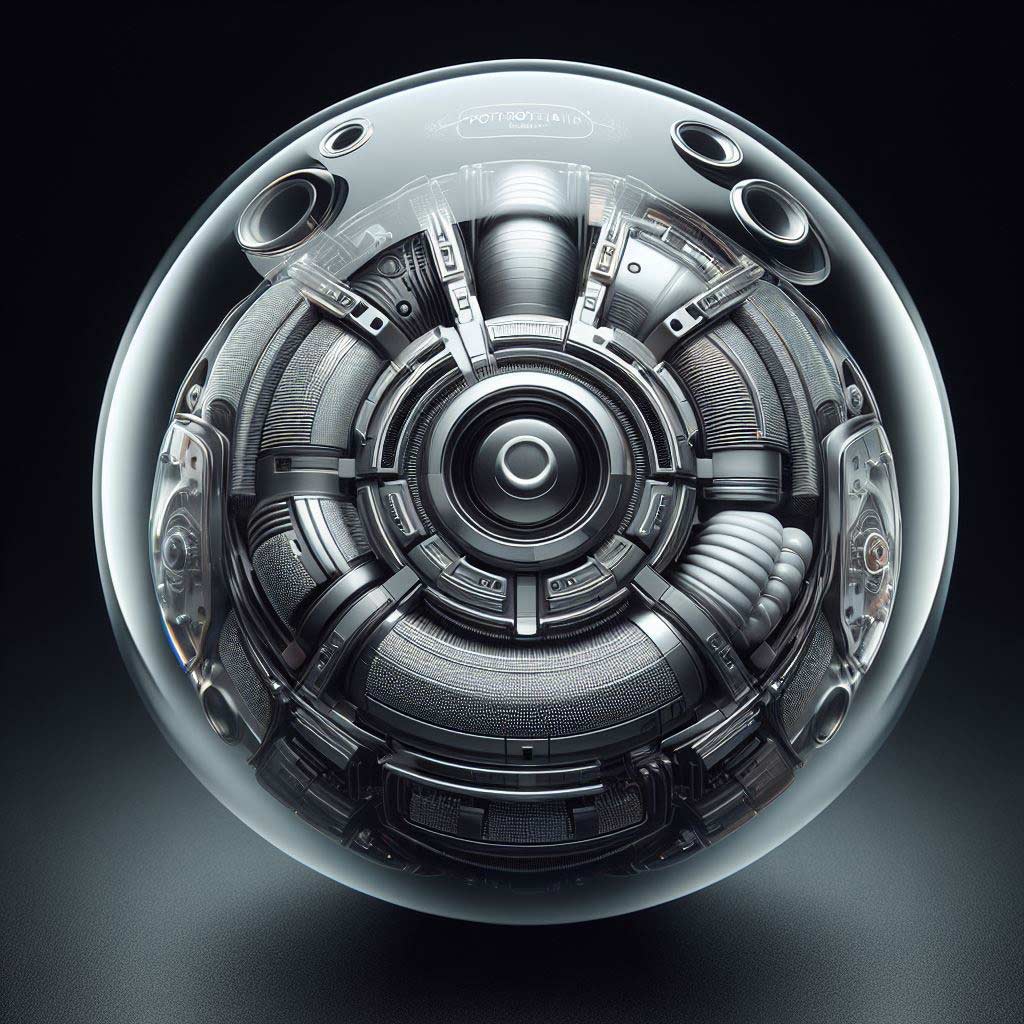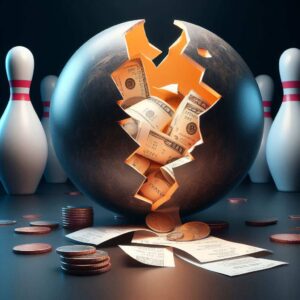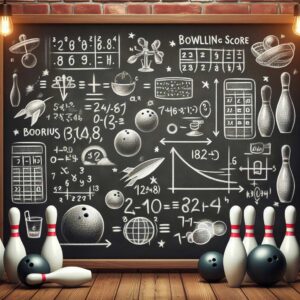For many years, there has been a common misconception that bowling balls are made of marble. The idea of these heavy, spherical objects being carved from a solid piece of marble seems logical at first glance.
However, the reality is much different – and far more complex than you might think. In this comprehensive guide, we’ll uncover the truth about the materials used in bowling ball construction and why marble isn’t a suitable choice for this demanding sport.
Bowling balls are not made of marble, but rather a combination of carefully selected materials designed to provide optimal performance on the lanes.
From the core to the outer shell, every component plays a crucial role in determining a ball’s hook potential, weight distribution, and overall behavior. So, let’s dive in and explore the fascinating world of bowling ball materials!
-
What Bowling Balls Are Not Made Of
Marble
While marble is a beautiful and durable natural stone, it is not suitable for bowling ball construction. The main reason for this is its brittleness.
Bowling balls need to withstand repeated impacts against the lane surface and pins, and marble is simply too fragile to handle such intense forces without cracking or chipping.
Another issue with marble is its high cost. Bowling balls need to be affordable for the average bowler, and using a solid piece of marble would make them prohibitively expensive.
Additionally, marble’s density and weight distribution would make it challenging to achieve the desired performance characteristics required in a high-quality bowling ball.
Other common misconceptions
Aside from marble, there are a few other materials that some people mistakenly believe are used in bowling ball construction. Wood, for instance, is not a viable option due to its low density and susceptibility to cracking or warping over time. Metal balls, while incredibly dense, would cause excessive damage to the lane surfaces and would be extremely difficult to control.
-
The Materials Used in Bowling Ball Construction
Polyester resin
One of the primary materials used in bowling ball construction is polyester resin. This synthetic material forms the core of most entry-level and mid-range balls.
Polyester resin provides a solid, durable base that can withstand the repetitive impacts of bowling while also allowing for a degree of flexibility.
Plastic materials (polyester, urethane, etc.)
The outer shell of a bowling ball is typically made from various types of plastics. Polyester and urethane are two of the most commonly used materials.
Polyester balls are known for their durability and longevity. They offer a straight, predictable ball motion and are often recommended for beginner and recreational bowlers.
Urethane, on the other hand, is a more advanced material that provides enhanced traction and hooking potential. Urethane balls are favored by more experienced bowlers who desire greater control and the ability to generate more aggressive hook patterns on the lane.
Core materials (high-density materials like barium, etc.)
While the outer shell determines the ball’s traction and reaction on the lane, the core plays a crucial role in weight distribution and overall ball dynamics. Core materials used in bowling balls include high-density substances like barium, tungsten, and bismuth.
These dense materials are strategically positioned within the core to create specific weight blocks or asymmetrical designs. This allows manufacturers to fine-tune the ball’s center of gravity and rotational properties, ultimately influencing its hook potential and overall performance.
-
The Manufacturing Process
Molding and curing
The manufacturing process of bowling balls begins with molding the various components. The core materials are carefully weighed and placed into a mold, which is then filled with the chosen resin or plastic material.
This assembly is then subjected to a curing process, where heat and pressure are applied to solidify the materials and bind them together. The curing process is crucial to ensure the ball’s structural integrity and consistent performance.
Drilling and finishing
Once the cured ball is removed from the mold, it undergoes a precise drilling process to create the finger holes. The placement and angle of these holes are carefully calculated based on the bowler’s individual specifications, such as hand size and desired ball dynamics.
After drilling, the ball goes through a finishing process, where the surface is sanded, polished, and in some cases, treated with specialized coatings or additives to enhance traction or create specific ball reactions on the lane.
-
Performance Considerations
Hook potential and reaction on the lane
The materials used in bowling ball construction play a significant role in determining the ball’s hook potential and overall reaction on the lane. Urethane balls, for instance, are known for their aggressive hooking action due to their increased traction on the lane surface.
Conversely, polyester balls tend to have a straighter trajectory with less hook, making them more predictable and suitable for bowlers who prefer a more controlled ball motion.
Weight distribution and balance
Another crucial factor influenced by the materials used in bowling ball construction is weight distribution and balance. The strategic placement of dense core materials creates specific weight blocks or asymmetrical designs, which affect the ball’s center of gravity and rotational properties.
A well-balanced ball with optimal weight distribution can provide a more consistent and controllable roll, reducing the likelihood of erratic or unpredictable ball behavior.
-
Types of Bowling Balls Based on Materials
Entry-level/recreational balls
For beginner and recreational bowlers, entry-level balls made of polyester or basic urethane blends are often the go-to choice. These balls offer a balance of affordability, durability, and predictable performance, making them ideal for those just starting out or bowling for leisure.
High-performance balls
As bowlers progress and seek greater hook potential and control, they may opt for high-performance balls made of advanced urethane or reactive resin materials.
These balls are engineered to provide maximum traction and aggressive hooking action, catering to the needs of competitive bowlers and those seeking to maximize their scoring potential.
Specialty balls (e.g., spare balls, etc.)
In addition to standard bowling balls, there are also specialty balls designed for specific situations or playing styles. Spare balls, for instance, are typically made of plastic or polyester materials and are intended for straight, predictable shots when picking up spare pins.
Other specialty balls may incorporate unique core designs or surface treatments to achieve specific ball reactions or address particular lane conditions.
-
Caring for Your Bowling Ball
Cleaning and maintenance
Proper care and maintenance are essential to ensure the longevity and consistent performance of your bowling ball, regardless of the materials used in its construction.
Regular cleaning with approved ball cleaners and polishes is recommended to remove built-up oil, dirt, and grime that can affect the ball’s reaction on the lane.
Additionally, it’s important to avoid exposing your ball to extreme temperatures or harsh chemicals that could potentially damage the materials.
Storage and transportation
When not in use, bowling balls should be stored in a cool, dry place away from direct sunlight or excessive heat. Proper storage helps prevent warping, cracking, or other types of damage that could occur over time.
For transportation, it’s advisable to use a dedicated bowling ball case or bag to protect your investment from scratches, dents, or other potential damage during transit.
Conclusion:
By now, it should be clear that bowling balls are not made of marble. Instead, they are carefully engineered using a combination of materials like polyester resin, various plastics, and high-density core substances.
Each material plays a crucial role in determining the ball’s performance characteristics, weight distribution, and overall behavior on the lane.
Understanding the materials used in bowling ball construction is essential for bowlers of all skill levels. Whether you’re a beginner seeking a reliable, entry-level ball or a seasoned competitor seeking maximum hook potential, choosing the right ball materials can make a significant difference in your game.
As you explore different ball options, consider your skill level, playing style, and desired ball reactions. Don’t hesitate to consult with experienced bowling professionals or manufacturers to help guide you in selecting the perfect ball for your needs.
Remember, proper care and maintenance are key to preserving the longevity and performance of your bowling ball, regardless of the materials used in its construction.
With the right ball, the correct care routine, and a dedication to improving your technique, you’ll be well on your way to achieving your bowling goals and enjoying this exciting sport to the fullest.





